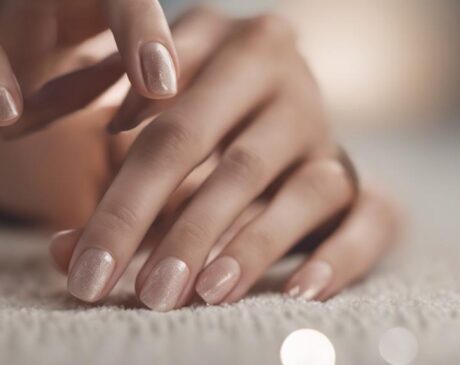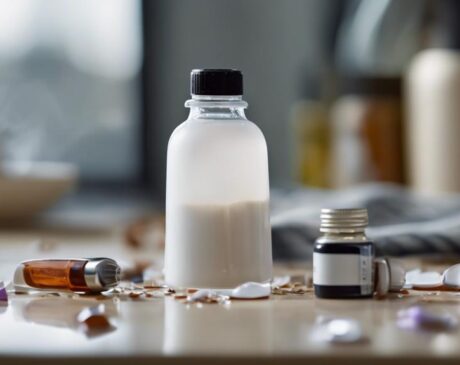What Nail Technique Is Least Damaging?
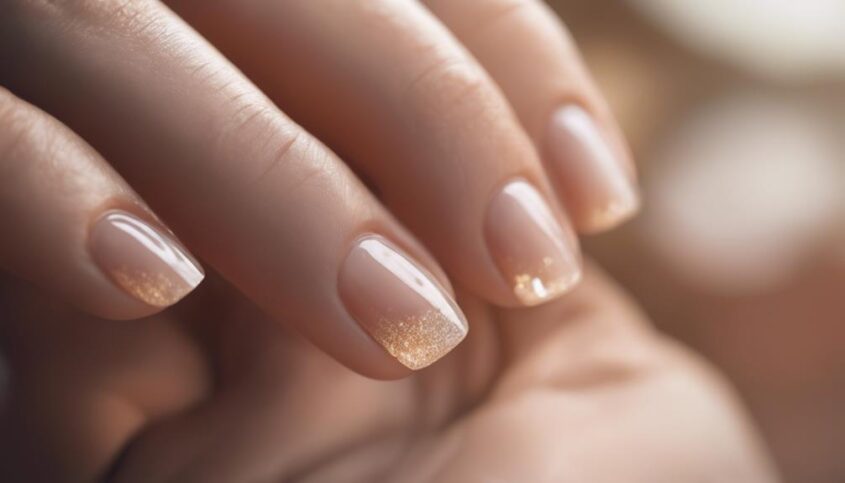
The least damaging nail technique is SNS (Signature Nail Systems), providing a chip-resistant finish that strengthens natural nails without UV light. SNS is a powder-dipping system that allows nails to breathe and offers durability. If you seek a gentle option that values your nail health, SNS is a great choice.
Key Takeaways
- SNS Nail Enhancement: Does not require UV light, strengthens natural nails, chip-resistant finish.
- Silk and Fiberglass Wraps: Offer flexibility, durability, and natural look.
- Shellac Technique: Lasts up to two weeks without chipping, wide color range.
- Dip Powder Nails: Longevity and durability, requires base coat for adhesion.
- Natural Nail Care: Hydration, biotin-rich foods, non-toxic products, avoid nail damage.
Pros and Cons of Acrylic Nails
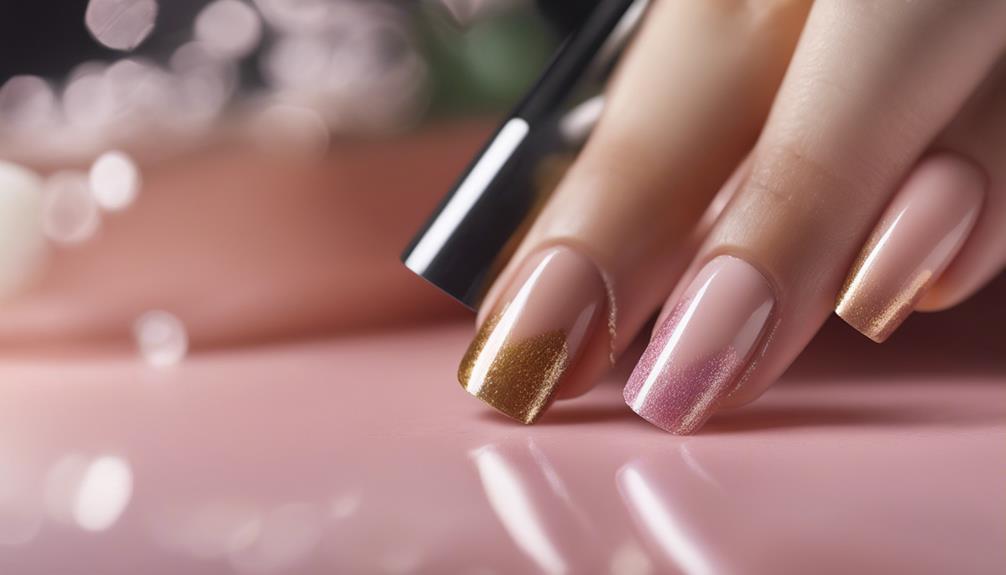
When considering the pros and cons of acrylic nails, it is essential to weigh the benefits against the potential drawbacks in order to make an informed decision. Acrylic nails have been a staple in the beauty industry for their durability and versatility. One of the key advantages of acrylic nails is their strength and long-lasting nature, making them an ideal choice for individuals looking for a manicure that can withstand everyday wear and tear.
Additionally, acrylic nails offer a wide range of design options, allowing for creativity and customization. Whether you prefer a simple, classic look or intricate nail art, acrylic nails can cater to various styles and preferences. Moreover, acrylic nails are relatively affordable compared to other nail techniques, making them accessible to a broader audience.
However, it is important to note that acrylic nails require regular maintenance and touch-ups to prevent lifting and ensure the health of your natural nails. Over time, frequent application and removal of acrylic nails can weaken the natural nail bed, leading to potential damage if not properly cared for. Therefore, while acrylic nails offer numerous benefits, it is crucial to consider the necessary upkeep and potential risks before opting for this nail technique.
The Impact of Gel Manicures
The impact of gel manicures on natural nails and the associated health risks are important considerations in the realm of nail care. Understanding the maintenance and upkeep required for gel manicures is crucial for individuals opting for this technique. Balancing the desire for long-lasting, vibrant nails with the potential consequences on nail health is a key aspect to ponder when choosing gel manicures.
Gel Vs. Natural Nails
Comparative studies have shown that gel manicures can have a significant impact on the health and integrity of natural nails. While gel manicures offer long-lasting color and shine, they often require the use of harsh chemicals and UV light during the curing process. These factors can weaken the natural nail structure over time, leading to brittleness, peeling, and thinning. In contrast, natural nails maintain their strength and flexibility without the need for artificial enhancements. By opting for natural nails, individuals can promote healthier nail growth and reduce the risk of damage associated with gel manicures. Embracing the beauty of natural nails not only supports overall nail health but also encourages a more sustainable approach to nail care.
Health Risks Involved
Gel manicures pose potential health risks due to the use of harsh chemicals and UV light during the curing process, impacting the integrity and health of natural nails. The chemicals in gel polishes, such as methacrylate monomers, can cause allergic reactions and skin irritations in some individuals. Prolonged exposure to UV light during the curing process may increase the risk of skin damage and potentially lead to skin cancer. Additionally, the process of removing gel manicures by soaking nails in acetone can dehydrate the nail plate, making it brittle and prone to breakage. To minimize these risks, it is essential to follow proper application and removal techniques, consider using protective gloves during the curing process, and give the nails adequate time to recover between gel manicures.
Maintenance and Upkeep
Regular maintenance and proper care play a crucial role in preserving the health and appearance of nails following gel manicures. To maintain the integrity of your nails post-gel manicure, it is essential to keep them hydrated by regularly applying cuticle oil and moisturizing hand creams. Additionally, scheduling routine touch-ups every 2-3 weeks can help prevent chipping and maintain the aesthetic appeal of your nails. Choosing high-quality gel products and ensuring that UV/LED lamps are in optimal condition can also contribute to prolonging the longevity of your gel manicure. By implementing these maintenance practices, you can enjoy long-lasting and healthy nails without compromising on style or quality.
Exploring Dip Powder Nails
Let's examine the application process overview and the longevity and durability of dip powder nails in comparison to other nail techniques. Understanding how dip powder nails are applied and the length of time they can last can provide valuable insights into their potential benefits and drawbacks. By exploring these key points, individuals can make informed decisions when choosing the least damaging nail techniques for their nail care routines.
Application Process Overview
Exploring the application process of dip powder nails provides insight into a popular and durable nail technique. The process involves applying a base coat, dipping the nails into colored powder, repeating the dipping process for intensity, applying an activator, shaping the nails, and finishing with a sealant. This method results in a long-lasting and chip-resistant manicure that is favored by many due to its strength and longevity.
| Steps | Description | Benefits |
|---|---|---|
| Base Coat | Provides adhesion for the powder to stick to the nails. | Promotes durability |
| Dipping | Involves dipping the nails into colored powder for color. | Customizable colors |
| Activator | Helps harden the powder and bond it to the nails. | Ensures longevity |
| Sealant | Seals and protects the color, providing a glossy finish. | Adds shine |
Longevity and Durability
How does the longevity and durability of dip powder nails compare to other popular nail techniques? Dip powder nails are renowned for their exceptional longevity and durability, setting them apart from traditional nail polish and even some types of artificial nail enhancements. The unique application process of dip powder nails, which involves layering finely milled powder onto the nails and sealing it with a clear protective coat, results in a robust and long-lasting finish. Unlike gel or acrylic nails that may chip or lift over time, dip powder nails are less prone to these issues, providing wearers with extended periods of flawless manicures. This innovative approach to nail enhancements not only ensures a beautiful aesthetic but also guarantees lasting performance, making dip powder nails a top choice for individuals seeking durable and enduring nail solutions.
Comparing Silk and Fiberglass Wraps
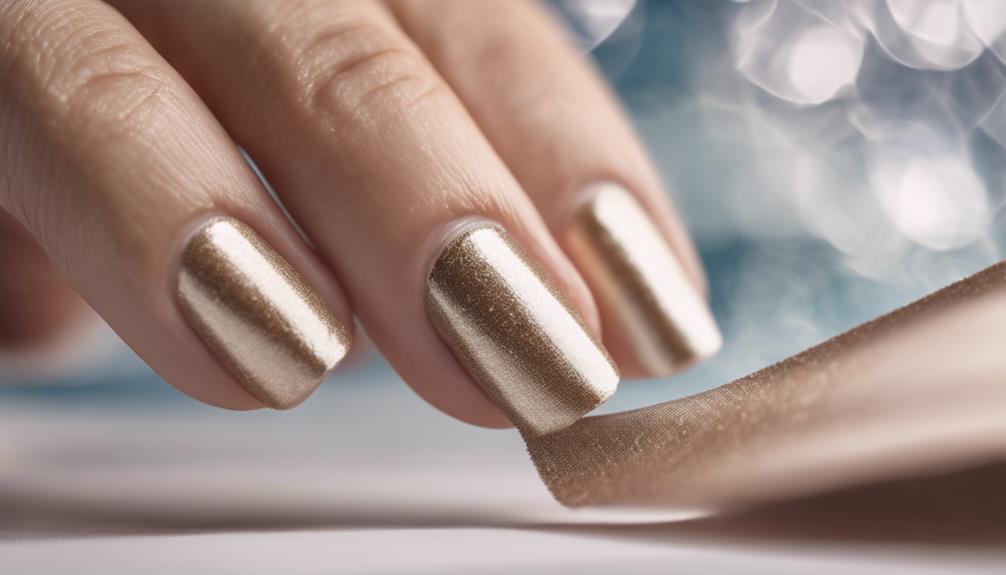
Which type of nail wrap, silk or fiberglass, offers the most durability and natural look for nail enhancements? Both silk and fiberglass wraps are popular choices for reinforcing natural nails and providing added strength. Silk wraps are known for their flexibility and natural look. They are lightweight and offer a more natural appearance compared to fiberglass wraps. However, fiberglass wraps are incredibly durable and provide a strong layer of protection for the nails. They are also less likely to tear or fray than silk wraps.
When it comes to longevity, fiberglass wraps tend to outlast silk wraps due to their sturdy nature. Fiberglass wraps are also more resistant to water and other elements, making them ideal for individuals with active lifestyles. On the other hand, silk wraps may need more frequent maintenance to upkeep their natural appearance. Ultimately, the choice between silk and fiberglass wraps depends on personal preference and the desired outcome. Both options offer innovative solutions for nail enhancements, providing durability and a polished look.
Understanding Shellac and SNS
Shellac and SNS are two popular nail enhancement techniques known for their long-lasting results and unique application processes. Shellac, a blend of gel and nail polish, is cured under UV light for a durable finish that can last up to two weeks without chipping. Its removal process involves soaking in acetone, which can weaken the nails if done frequently. On the other hand, SNS, which stands for Signature Nail Systems, is a powder-dipping system that doesn't require UV light. It offers a lightweight and flexible alternative to traditional acrylics, providing a glossy and chip-resistant finish. SNS is lauded for its ability to strengthen natural nails while allowing them to breathe. Both techniques offer a wide range of colors and finishes, catering to individuals seeking innovative nail solutions that prioritize longevity and aesthetics. When considering Shellac vs. SNS, it's essential to weigh the application process, maintenance requirements, and desired outcome to determine which technique aligns best with your preferences and nail health goals.
Nail Health: Tips for Recovery
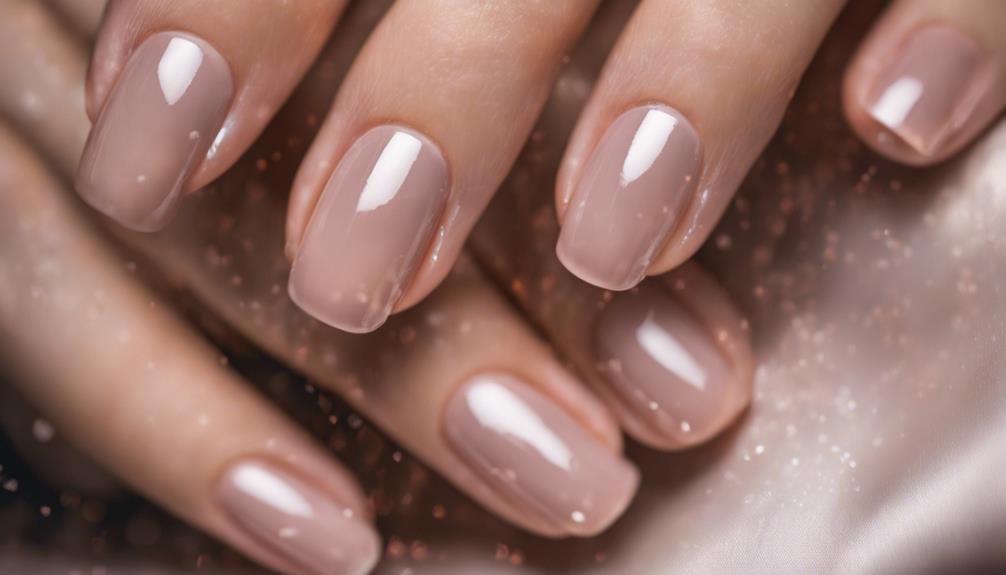
For individuals looking to prioritize nail health and recovery after using nail enhancement techniques like Shellac and SNS, implementing effective tips for restoration is crucial. To kickstart the recovery process, it is essential to give your nails a break from any further enhancements. Opt for nourishing treatments such as nail oils or creams to replenish moisture and strengthen the nails. Incorporating biotin supplements into your daily routine can also promote nail growth and overall nail health.
Regularly trimming and shaping your nails can prevent further damage and promote healthy growth. When choosing nail polish, opt for formulas that are free from harsh chemicals like formaldehyde and toluene to minimize potential damage. Additionally, wearing gloves while doing household chores or tasks that involve water can help protect your nails from weakening.
Maintaining a balanced diet rich in vitamins and minerals, particularly calcium, zinc, and vitamins A and C, can also contribute to nail health. Lastly, staying hydrated by drinking an adequate amount of water daily is essential for overall nail recovery and health.
Natural Nail Care Techniques
To maintain healthy and strong nails, incorporating natural nail care techniques into your routine is essential. Natural nail care focuses on nourishing the nails from within and avoiding harsh chemicals that can cause damage. Here are three innovative natural nail care techniques to help you achieve beautiful and resilient nails:
- Hydration is Key: Keeping your nails hydrated is crucial for their health. Use natural oils like jojoba oil or almond oil to moisturize your nails and cuticles regularly. These oils penetrate deeply, providing essential nutrients and hydration to strengthen your nails.
- Nail-Friendly Diet: What you eat directly impacts the health of your nails. Incorporate foods rich in biotin, such as nuts, seeds, and leafy greens, into your diet to promote nail growth and strength naturally.
- Gentle Nail Care Practices: Opt for non-toxic nail polishes and removers to avoid exposing your nails to harmful chemicals. Additionally, avoid using your nails as tools to prevent unnecessary stress and potential damage.
Frequently Asked Questions
Are There Any Nail Techniques That Are Completely Damage-Free?
In the realm of nail techniques, a quest for a completely damage-free method remains elusive. Despite advancements, no technique can guarantee zero harm. Research and innovation continue to strive towards minimizing potential damage in nail care practices.
How Long Does It Take for Nails to Fully Recover After Using Acrylic Nails?
Nails may require 3-6 months to fully recover after acrylic nails. Adequate care, hydration, and avoiding further damage can expedite the process. Consult a nail technician or dermatologist for personalized advice on restoration and maintenance.
Can Certain Nail Techniques Cause Allergic Reactions or Skin Irritations?
Research shows that certain nail techniques can indeed cause allergic reactions or skin irritations, impacting nail health. Understanding the ingredients in products and opting for hypoallergenic options can mitigate these risks, promoting both safety and style.
Are There Any Specific Aftercare Tips That Can Help Minimize Damage From Nail Techniques?
Implementing specific aftercare tips following nail techniques is crucial. Proper care can minimize damage, enhance longevity, and promote nail health. Prioritize hydration, use protective products, avoid harsh chemicals, and seek professional maintenance to ensure optimal results.
Is It Possible to Have a Combination of Different Nail Techniques to Achieve a Desired Look Without Causing Damage?
Combining various nail techniques to achieve a desired look without causing damage is feasible with careful planning and execution. Understanding the compatibility of methods, proper application, and regular maintenance can lead to stunning, long-lasting results.


